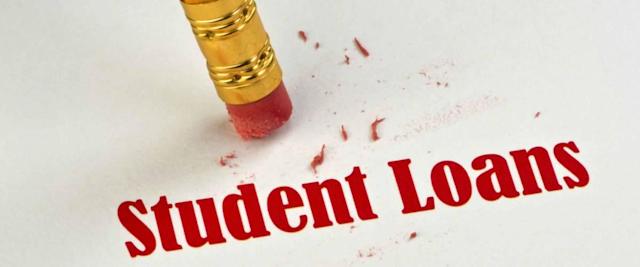Last month President Biden announced the Federal Student Loan Forgiveness Plan (the Plan), which will cancel up to 20% of outstanding Federal student loan debt. Loan relief will be provided to about 43 million borrowers and it will eliminate the entire remaining balance for almost 20 million individuals. An estimated 90% of the debt relief will assist people making under $75,000 a year. The administration’s action provides debt relief as part of a package that also constrains rising tuition and reforms the student loan system.
In the last post, we covered eligibility for student loan forgiveness. This post describes the process for obtaining forgiveness. We also consider the fairness of the Plan, an issue that is controversial as public policy.
Obtaining Loan Forgiveness
To be eligible for loan forgiveness, a former student must be earning less than $125,000 annually as an individual or $250,000 if married. There are about 8 million borrowers who will receive loan forgiveness automatically because their income is already known to the U.S. Education Department (ED) due to their participation in an income-driven repayment program. If the ED has a former student’s income data, it can cancel part or all of their debt without the need for them to take any action. Students for whom the ED does not have income data will need to submit an application that the ED will introduce in early October.
A borrower’s loan servicer is a private company that the ED designates to handle billing and other services. The servicer assists students on matters related to their loans, including income-driven repayment plans, loan consolidation, and loan forgiveness programs. A borrower’s servicer will promptly notify them if all or part of their loan is forgiven. Borrowers should be on the alert for any correspondence from their servicer via email or mail and should check their loan balance online intermittently.
Borrowers with loan balances greater than the amount forgiven will need to resume payments after the loan repayment pause that was initiated in March 2020 expires on December 31, 2022. Monthly payment amounts will be recalculated by loan servicers, which is especially important to those who opt for the new income-driven repayment plan that caps payments at 5% of the borrower’s discretionary income.
Former students who want to be notified as soon as the ED’s loan forgiveness application is available may sign up at the ED’s subscription page. After a borrower submits an application, the ED has stated that they can expect relief within six weeks. Borrowers are advised to apply before November 15th if they want to receive forgiveness before the loan repayment pause expires.
The ED will continue to process loan forgiveness applications received in 2023. The forgiveness application period will not expire until December 31, 2023, so borrowers will have over a year to apply after the ED’s application becomes available.
In order for a borrower to ensure that they receive the loan forgiveness to which they’re entitled, experts advise that they take a screenshot of their current student loan balance so they can verify that the correct amount has been subtracted from their balance.
The Fairness of the Student Loan Forgiveness Plan
Education is both a public and a private good. Since a more educated workforce benefits the public as a whole, collectively paying for debt relief is fair, just as paying for public K-12 education is fair even though many taxpayers have no children in school.
The concept of timing enters into the issue of fairness with regards to students who don’t benefit from the Plan. Complaints about unfairness are justified from students who are just starting college or have paid off their loans. But such complaints are akin to people who suffered from an illness resenting those who haven’t because a vaccine came along too late to help them. What transpired was neither fair nor unfair.
Putting aside fairness to some students, what about the fact that all taxpayers get stuck paying for what benefits only a relative few of them? According to a study by UPenn’s Wharton School, the Plan will cost taxpayers about $520 billion. A study by the National Taxpayers Union Foundation estimates that student loan relief will cost each taxpayer an average of $2,500. Since the tax burden is progressive, with people with higher incomes contributing a greater amount, those earning between $200,000 and $500,000 will end up contributing about $10,000 each.
Is it fair to ask taxpayers who do not benefit from loan forgiveness to pay back the student loans of others? According to the advisory firm Best Colleges, the answer is “Yes”. They assert that , “As with any government welfare program, corporate bailout, disaster relief, infrastructure project, war effort, or space expedition, we should all collectively bear the financial burden of higher education.”
Many things are unfair. One of them is a postsecondary educational system that compels students to earn degrees for jobs that shouldn’t require them, allows college tuition to rise unfettered by constraint, requires students to take on debt they often need decades to repay, and, as a result, forces many borrowers to forego some of life’s milestones. This is the specific type of unfairness that the Plan is designed to redress.
Next Post: The Student Loan Forgiveness Plan — Part 3: Tax Ramifications


Recent Comments